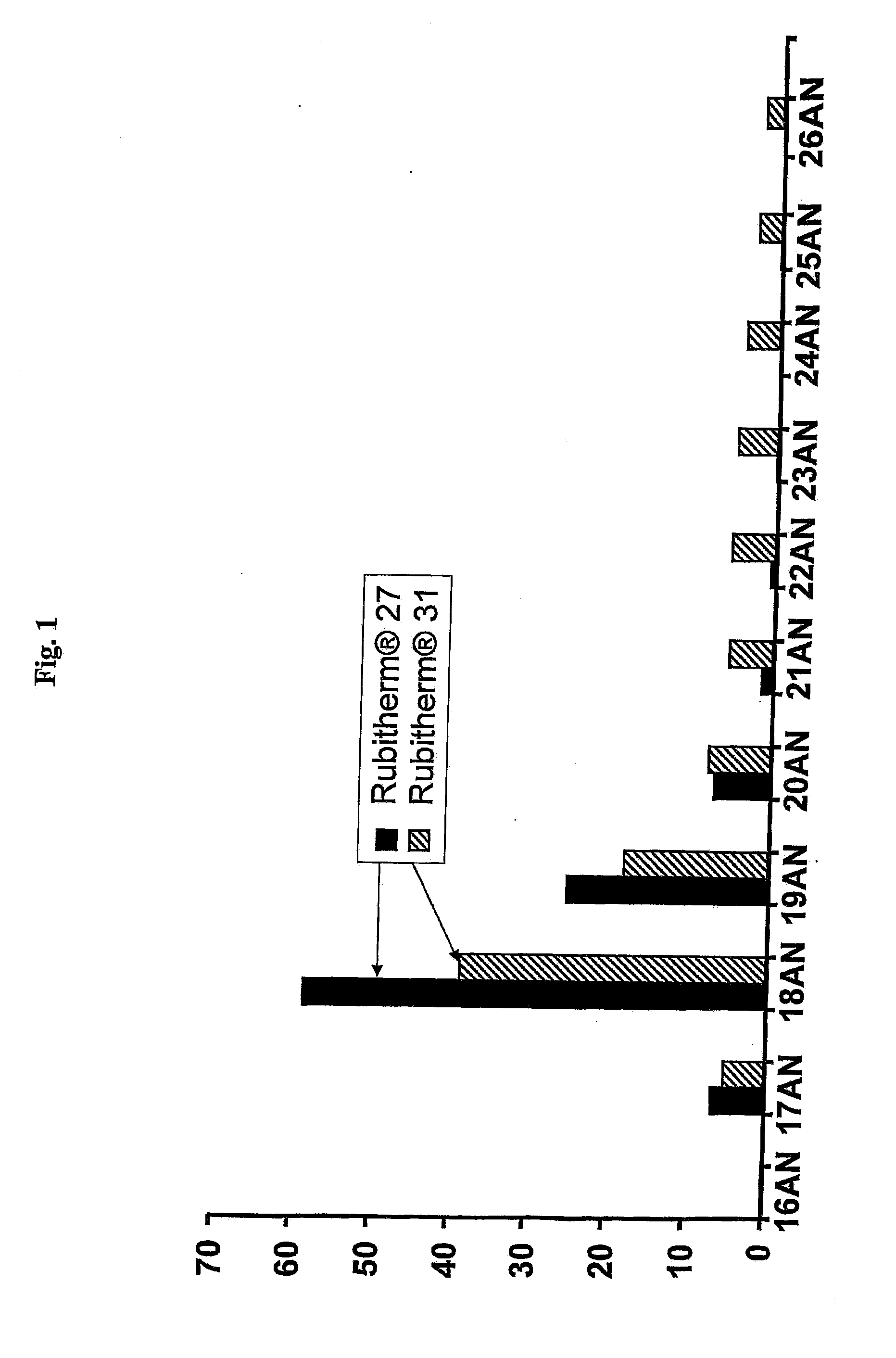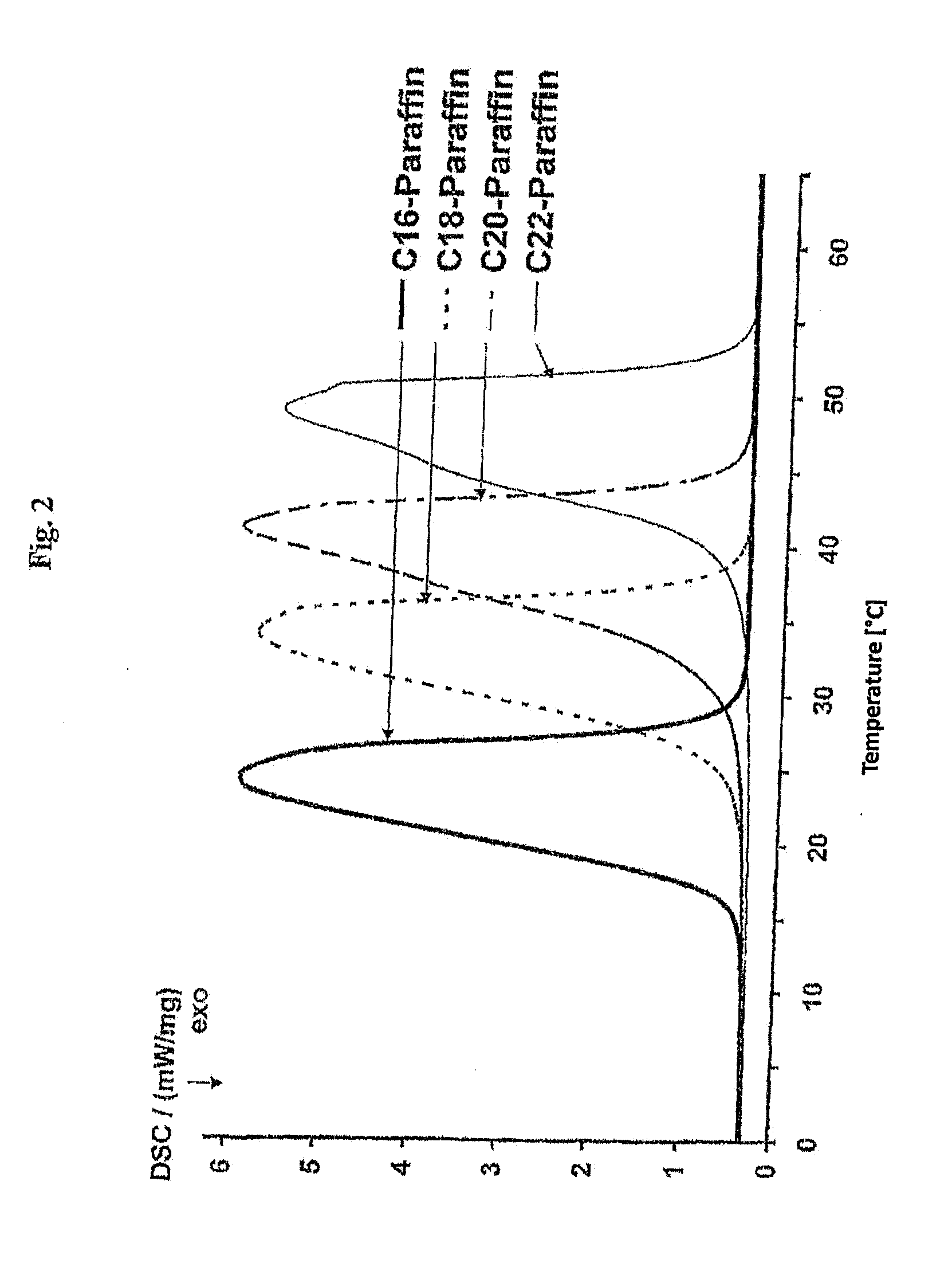Method for Producing a Latent Heat Storage Material and Dialkyl Ether as a Latent Heat Storage Material
- Summary
- Abstract
- Description
- Claims
- Application Information
AI Technical Summary
Benefits of technology
Problems solved by technology
Method used
Image
Examples
experiment 1
[0039]Dehydrating fatty alcohols to linear olefins 2474 g of NACOL® 16-99 (purity 99.5%, based on renewable raw materials) were mixed with 500 g of Al2O3 and 60 ml of xylene in a 6 l flask and heated at up to 295° C. at the water separator for 4.5 hours. In that, 180 ml of water were formed. The hexadecene formed was distilled in vacuum. The yield was a mixture of alpha- and internal olefins.
experiment 2
[0040]Hydrating linear olefins to linear paraffins 685 g of the hexadecene obtained in Experiment 1 were hydrated for 7 hours at 98° C. according to a known method over a heterogeneous Ni-containing catalyst at 20 bar H2 pressure and filtrated after cooling.
[0041]Fatty alcohols with chain lengths of C16 to C22 were used according to Experiments 1 and 2, and the following paraffins were obtained:
TABLE 2ParaffinHexadecaneOctadecaneEicosaneDocosanen-paraffin (main99.698.893.297.4component) [%]n-paraffin99.898.996.898.6(total) [%]iso-paraffin [%]0.20.11.81.2Onset [° C.]17.427.432.540.6Melting heat [J / g]245.6250.7247.2270.5
experiment 3
[0042]Experiments 1 and 2 were repeated, however, a synthetic fatty alcohol (hexadecanol) from the Ziegler process with a purity of 95.6% was used as the alcohol.
PUM
| Property | Measurement | Unit |
|---|---|---|
| Percent by mass | aaaaa | aaaaa |
| Percent by mass | aaaaa | aaaaa |
| Percent by mass | aaaaa | aaaaa |
Abstract
Description
Claims
Application Information
 Login to View More
Login to View More - R&D
- Intellectual Property
- Life Sciences
- Materials
- Tech Scout
- Unparalleled Data Quality
- Higher Quality Content
- 60% Fewer Hallucinations
Browse by: Latest US Patents, China's latest patents, Technical Efficacy Thesaurus, Application Domain, Technology Topic, Popular Technical Reports.
© 2025 PatSnap. All rights reserved.Legal|Privacy policy|Modern Slavery Act Transparency Statement|Sitemap|About US| Contact US: help@patsnap.com



